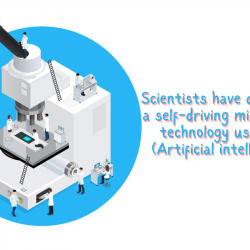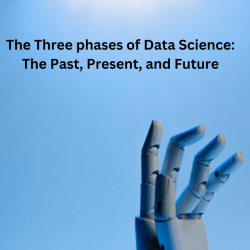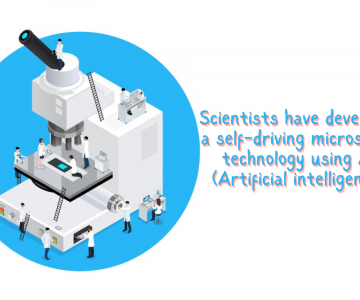AI (Artificial Intelligence) Is Being Trained to Display Empathy

Introduction to AI (Artificial Intelligence)
The rise of AI (Artificial Intelligence) has brought about numerous advancements in technology, but one of the most intriguing developments is the training of AI machines to display empathy. This may seem like a farfetched concept, but it holds great potential for enhancing human machine interactions and improving our overall experience with AI.
AI has been making waves in many industries, from healthcare to finance to transportation. Its ability to process data at lightning speed and make decisions based on that data has proven to be extremely beneficial. However, one key aspect that has been missing in AI is empathy. Empathy is defined as the ability to understand and share the feelings of others.
The concept of empathy may seem like a purely human trait, but researchers have been working on developing AI that can mimic this emotion. Why is empathy important for AI? Well, as intelligent as these machines are, they lack the emotional intelligence that humans possess. This can lead to misunderstandings and misinterpretations, resulting in poor decision making.
By training AI machines in empathy, we can bridge this gap and create a more harmonious relationship between humans and machines. Imagine having an AI assistant that understands your emotions and responds accordingly. It can help you navigate through difficult situations with care and compassion, much like a trusted friend or therapist would.
Definition of AI and Empathy
Firstly, let’s clarify what we mean by AI. The term AI refers to computer systems or machines that have the ability to mimic human intelligence and perform tasks that typically require human intelligence, such as problem solving, decision making, and natural language processing. With advancements in technology, AI has become an integral part of our daily lives from virtual assistants like Siri and Alexa to self-driving cars. AI is all around us.
On the other hand, empathy is defined as the ability to understand and share the feelings of another person. It involves putting yourself in someone else’s shoes and feeling what they feel. Empathy is a crucial aspect of human relationships; it allows us to connect with others on an emotional level and build meaningful connections.
Now you may be wondering, what does empathy have to do with AI? Well, as our interactions with technology become more frequent, researchers are exploring ways to make AI more humanlike. This includes teaching machines how to recognize emotions and respond empathetically.
Benefits and Challenges of AI Displaying Empathy
Firstly, let’s define what we mean by AI and empathy. AI refers to the simulation of human intelligence processes by machines, especially computer systems. On the other hand, empathy is often defined as the ability to put oneself in someone else’s shoes and understand their emotions and feelings. In simple terms, it means being able to feel what someone else is feeling.
One of the main benefits of training AIs to display empathy is improving customer service in various industries such as healthcare and retail. In healthcare, for example, AIs can be trained to understand patients’ emotions and provide appropriate responses or recommendations based on them. This can lead to better treatment outcomes and improved patient satisfaction.
Moreover, having empathetic AIs can also help bridge communication barriers between people from different cultures or languages. It can assist in translation services by not just translating words but also conveying emotional nuances accurately.
However, training AIs to display empathy also poses some challenges. Firstly, there is always the risk of bias creeping into their decision making processes if not programmed correctly.
Current State of AI Empathy Training
Empathy is the ability to understand and share the feelings of others. It is a crucial aspect of human interaction and communication. And now, researchers are trying to teach this important trait to AI technology. But before we dive into the current state of AI empathy training, let’s first understand what exactly this means.
AI empathy training involves teaching machines to recognize and respond to human emotions in a way that is appropriate and empathetic. This can range from understanding different emotions such as happiness, sadness, anger, etc., to display appropriate responses such as offering comfort or support.
The importance of empathy in AI technology cannot be understated. As more and more industries rely on AI for various tasks and services, it becomes crucial for machines to be able to understand and respond to human emotions effectively. For example, in customer service or healthcare settings where sensitive issues may arise, having an empathetic AI could greatly improve the overall experience.
So where are we in terms of advancements in AI empathy training? The good news is that significant progress has been made in this area. Researchers have developed various techniques such as machine learning algorithms and deep learning methods to teach machines about emotions and how to respond accordingly.
Techniques Used in Training AI for Empathy
Empathy is the ability to understand and share the feelings of another person. In the context of AI, it refers to the capacity to recognize and respond appropriately to emotions expressed by humans. Empathy plays a crucial role in human interactions, and it is equally important for AI systems to have this trait for effective communication and cooperation.
So how do we train AI for empathy? It involves various techniques that aim at teaching AI systems how to recognize emotions, interpret them correctly, and respond accordingly.
Data collection and analysis play a critical role in training AI for empathy. Gathering data from multiple sources such as social media platforms, chat conversations, or even facial expressions can help in understanding human emotions better. This data is then analyzed through machine learning algorithms to identify patterns and develop models that enable AI systems to recognize emotions accurately.
Natural Language Processing (NLP) is another technique used in training AI for empathy. NLP involves programming computers to understand, analyze, and generate human language. It helps in teaching AI systems how to read between the lines when humans communicate with them, identify emotional cues such as sarcasm or humor, and respond accordingly.
Examples of Successful AI Empathy Programs
AI empathy refers to the ability of machines to understand and respond to human emotions in a way that is similar to how humans would interact with each other. It goes beyond just recognizing certain facial expressions or tone of voice, but rather understanding the underlying emotions and responding appropriately.
So why is this important? Well, as AI becomes more prevalent in various industries, it’s crucial for machines to be able to interact with humans in a way that is empathetic and compassionate. This not only enhances user experience but also builds trust between humans and technology.
Now let’s take a look at some real-life examples of successful AI empathy programs implemented by companies.
1) Google Assistant:
Google has been at the forefront of developing AI empathy programs, particularly with their virtual assistant Google Assistant. With features such as ‘Continued Conversation’ where the assistant can respond without being prompted every time, and ‘Pretty Please’ which encourages polite language from users, Google Assistant is constantly improving its ability to empathize with users.
2) Replika:
Replika is an AI chatbot designed for individuals seeking emotional support or a companion. The chatbot not only responds with kind words but also remembers individual conversations and adapts its responses based on that information. It even has different personalities that users can choose from depending on their preferences.
Criticisms and Ethical Considerations
One of the main reasons behind teaching AI to display empathy is to enhance interactions with humans and make them feel more comfortable. By understanding and responding to human emotions, empathetic AI can provide a more personalized and humanlike experience.
However, critics argue that programming empathy into AI is not genuine and may lead to manipulation of human emotions. They believe that true empathy comes from a place of experience and understanding, something that machines lack.
Moreover, there are also ethical concerns surrounding the use of empathetic AI. As these machines become more advanced in displaying emotions, it raises questions about their rights and responsibilities towards humans. Can they be held accountable for their actions? Should they have limitations on how they can manipulate human emotions? These are important considerations as we continue to develop and implement empathetic AI.
Another concern is the potential bias in training AI with regards to empathy. Our own biases and prejudices can unintentionally seep into the programming process, leading to biased responses from these machines. This could have serious consequences in fields such as law enforcement or hiring processes where unbiased decision making is crucial.
Check Out:
Data Science Course Manchester
Investment Banking Course Manchester






Ingen kommentarer endnu